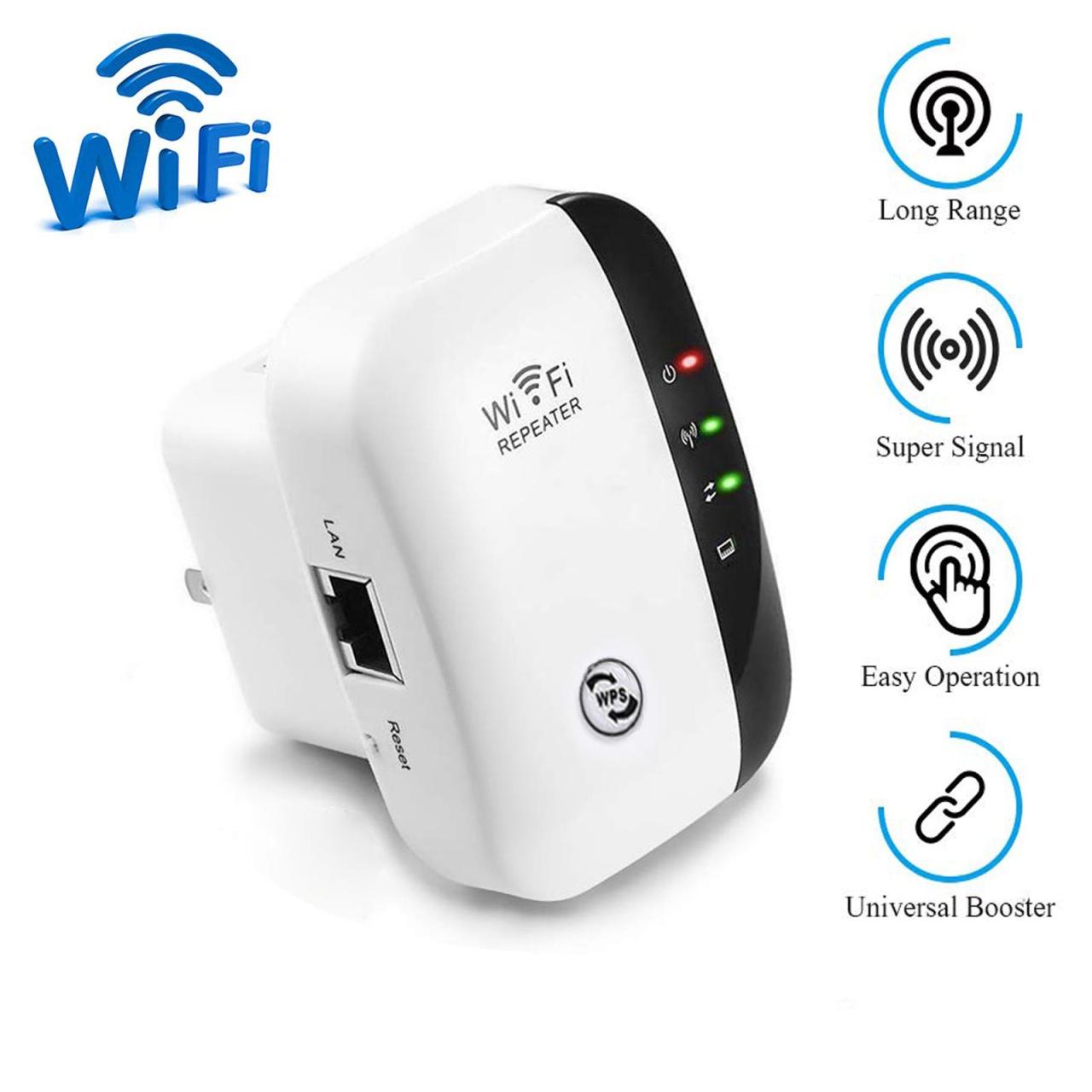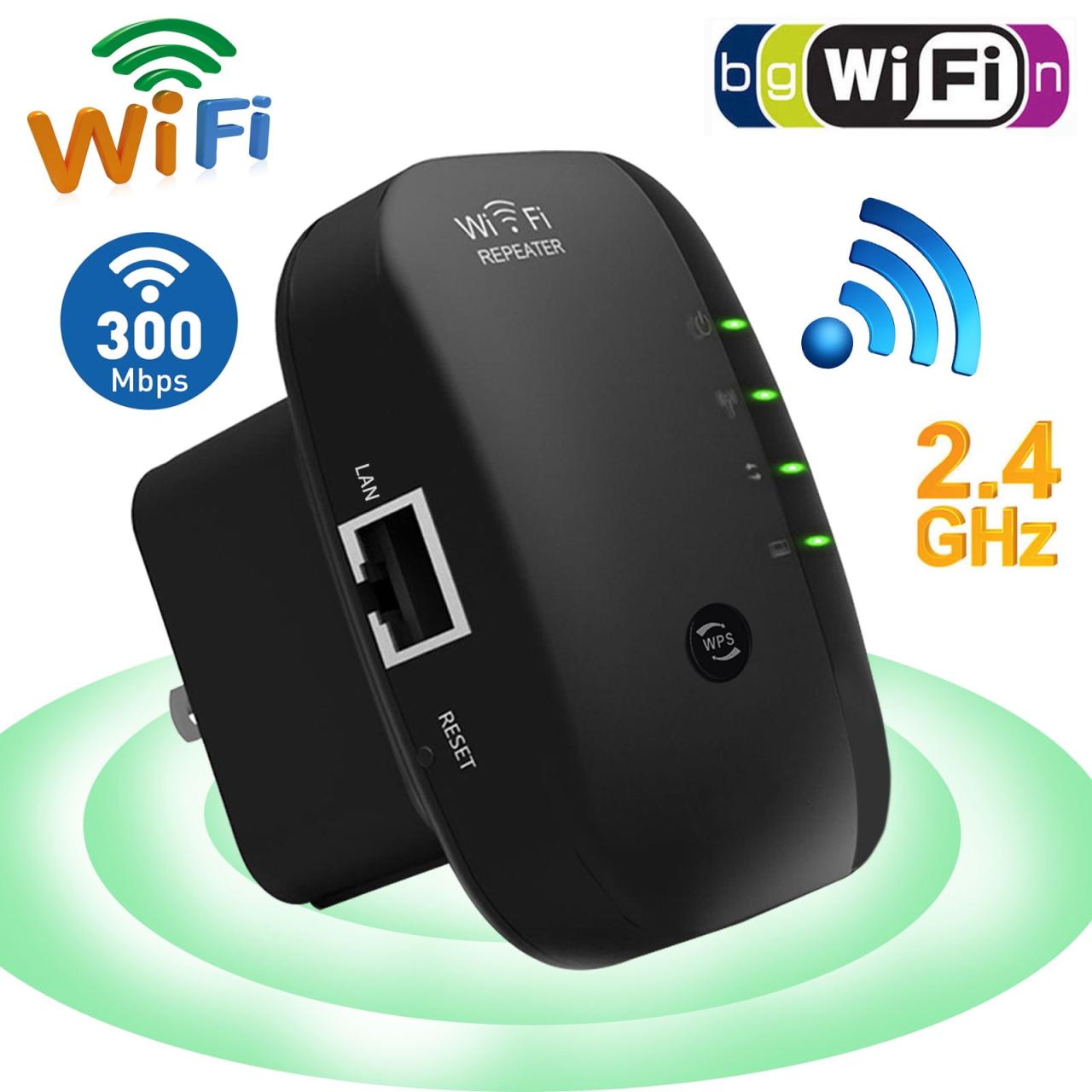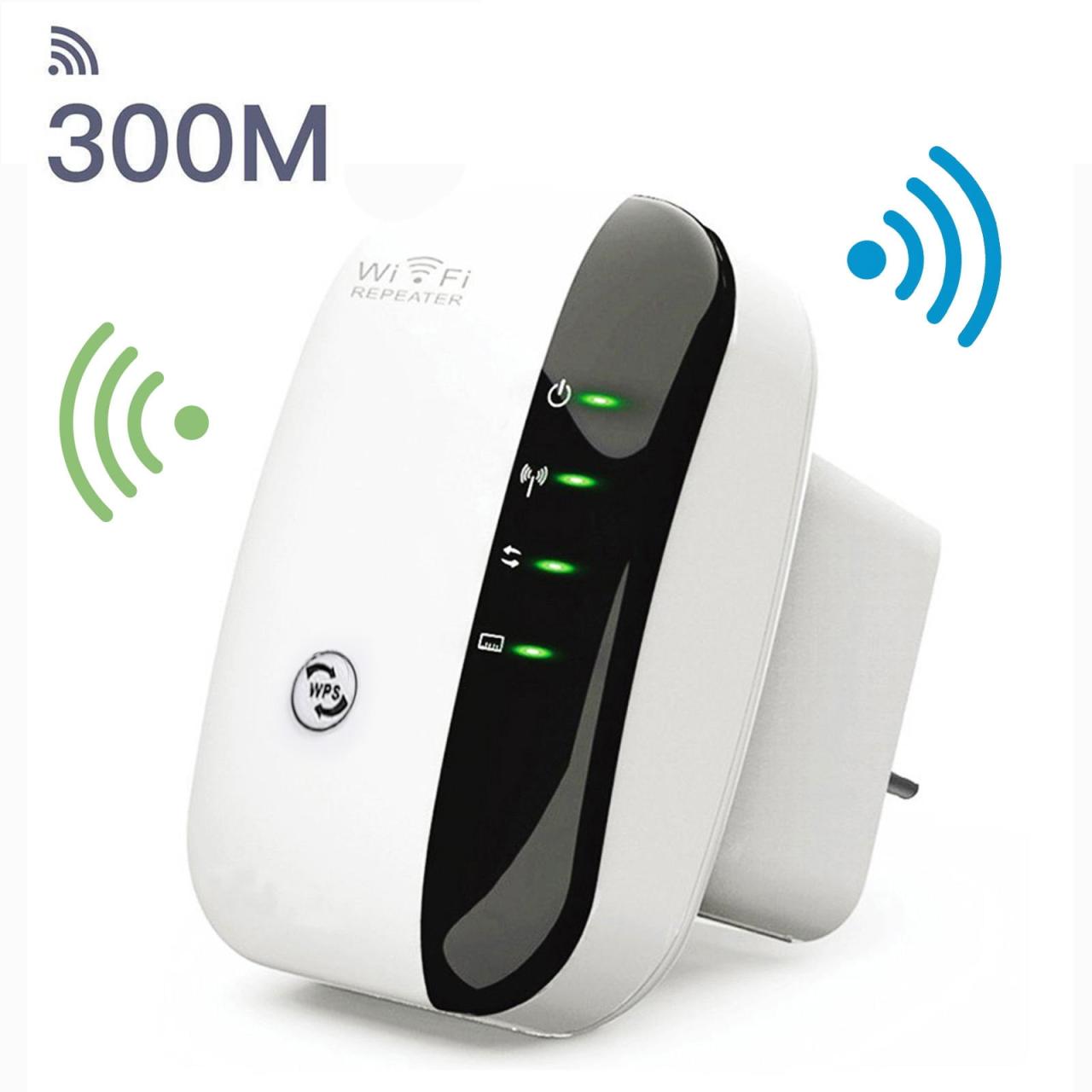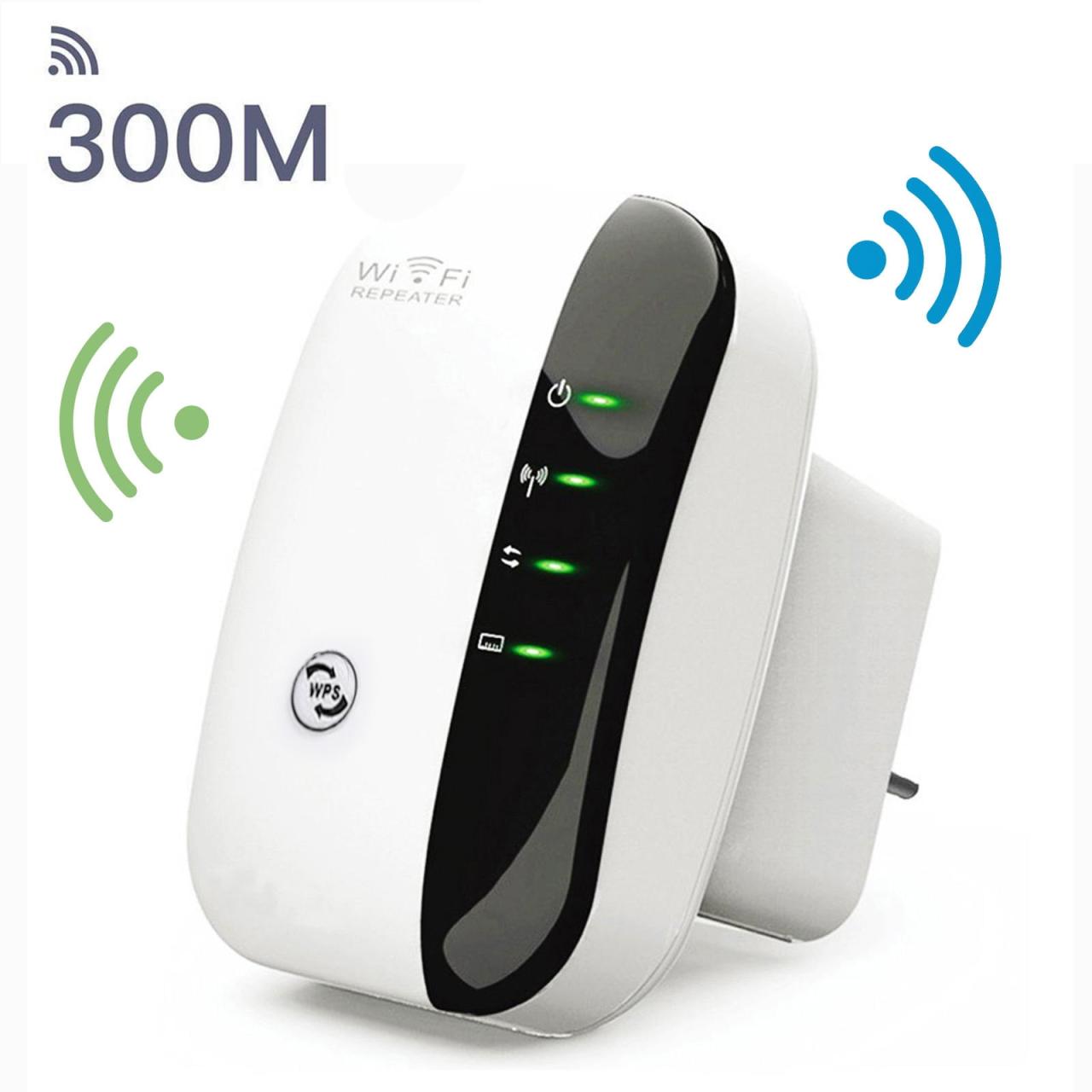Amplificateur Wifi, or Wi-Fi extender in English, is your ticket to a stronger, more reliable home network. Imagine seamless streaming, lag-free gaming, and consistent connectivity throughout your entire house, even in those notoriously tricky corners. This guide will walk you through everything you need to know about choosing, installing, and optimizing your amplificateur wifi for maximum performance.
We’ll cover the different types of extenders available, from simple range extenders to more sophisticated mesh systems. We’ll also delve into the technical specifications you should consider, such as frequency bands and data transfer rates, to ensure you pick the right one for your needs. Get ready to say goodbye to frustrating dead zones and hello to a powerful, reliable Wi-Fi connection!
Understanding “Amplificateur Wifi”
A wifi amplifier, also known as a wifi extender or repeater, boosts your existing wifi signal to reach areas where your router’s signal is weak or nonexistent. This allows you to enjoy reliable internet access throughout your home or office, eliminating frustrating dead zones.
Wifi Amplifier Functions
A wifi amplifier receives a wifi signal from your router, amplifies it, and rebroadcasts it. This extended signal allows devices further away from your router to connect and access the internet. The amplification process involves receiving the signal, processing it, and transmitting it at a higher power, thereby increasing its range.
Types of Wifi Amplifiers
Wifi amplifiers come in various forms, each with its own advantages and disadvantages. The most common types include:
- Range Extenders: These are simple devices that receive and rebroadcast your wifi signal. They’re relatively inexpensive and easy to set up, but can sometimes reduce overall network speed.
- Wifi Repeaters: Similar to range extenders, but often offer more advanced features like multiple antennas and better signal processing.
- Powerline Adapters: These use your home’s electrical wiring to transmit the internet signal, eliminating the need for a strong wifi signal. They’re a good option for hard-to-reach areas, but their speed can be affected by the condition of your wiring.
- Mesh Wifi Systems: These systems use multiple interconnected nodes to create a seamless wifi network throughout your home. They’re more expensive than traditional amplifiers, but generally offer better performance and coverage.
Mesh Wifi vs. Traditional Amplifiers
Mesh wifi systems offer superior performance and coverage compared to traditional wifi amplifiers. They create a single, unified network, eliminating the need to switch between different wifi networks. Traditional amplifiers, while simpler and cheaper, can suffer from speed reduction and signal degradation.
Beneficial Scenarios for Wifi Amplifiers
Wifi amplifiers are beneficial in situations where your router’s signal doesn’t reach all areas of your home or office. Examples include:
- Large homes with thick walls or multiple floors.
- Homes with many obstructions that interfere with wifi signals (e.g., metal appliances, furniture).
- Areas with weak or unreliable wifi signals.
- Gardens or outbuildings requiring internet access.
Technical Specifications and Features
Choosing the right wifi amplifier involves considering several key technical specifications and features to ensure optimal performance and security.
Key Technical Specifications
Important factors to consider include:
- Frequency Bands: Dual-band (2.4GHz and 5GHz) amplifiers offer better speed and range than single-band (2.4GHz) ones. 5GHz offers faster speeds, but shorter range.
- Data Transfer Rates: Look for amplifiers with high data transfer rates (measured in Mbps) for faster internet speeds. Higher Mbps generally means better performance.
- Range: The amplifier’s range determines how far it can extend your wifi signal. Consider the size of your home or office when selecting a range.
- Antenna Type and Number: Multiple antennas generally provide better signal coverage and stability.
Signal Strength and Bandwidth

Strong signal strength is crucial for reliable internet connectivity. Insufficient signal strength leads to slow speeds, dropped connections, and buffering issues. Bandwidth refers to the amount of data that can be transmitted at a given time; higher bandwidth means faster speeds.
Security Features
Security features like WPA2/WPA3 encryption are essential to protect your network from unauthorized access. Look for amplifiers that support these protocols and allow for strong password creation.
Wifi Amplifier Brand Comparison
The following table compares different wifi amplifier brands based on key specifications (Note: These are example values and may vary depending on the specific model):
| Brand | Frequency Band | Data Transfer Rate (Mbps) | Range (meters) |
|---|---|---|---|
| TP-Link | Dual-band (2.4GHz/5GHz) | 1300 | 100 |
| Netgear | Dual-band (2.4GHz/5GHz) | 1750 | 120 |
| Linksys | Dual-band (2.4GHz/5GHz) | 1200 | 90 |
| D-Link | Dual-band (2.4GHz/5GHz) | 1500 | 110 |
Installation and Setup
Installing a wifi amplifier is generally straightforward, but proper placement is crucial for optimal performance.
Step-by-Step Installation Guide
- Locate a suitable position for the amplifier, ideally midway between your router and the area with weak signal. Avoid placing it near metal objects or other electronic devices.
- Connect the amplifier to a power outlet.
- Connect the amplifier to your existing wifi network using the WPS button or by entering your network’s SSID and password.
- Wait for the amplifier to connect and broadcast its extended network.
- Connect your devices to the extended network.
Optimizing Amplifier Placement
Optimal placement is crucial. Experiment with different locations to find the spot with the strongest signal. Avoid placing it too close to the router or too far from the areas needing extended coverage.
Troubleshooting Common Problems

Common issues include weak signal, slow speeds, and connection drops. Check the amplifier’s placement, ensure it’s connected properly, and restart both the amplifier and your router if problems persist.
Potential Installation Obstacles
- Thick walls or floors.
- Interference from other electronic devices.
- Distance from the router.
- Incorrect placement.
Performance and Optimization
Several factors influence wifi amplifier performance. Understanding these factors can help you optimize its performance and achieve better wifi coverage.
Improving Wifi Amplifier Performance
To improve performance, ensure optimal placement, avoid interference from other devices, and regularly check for firmware updates. Consider using a dual-band amplifier for faster speeds and better range.
Need a stronger Wi-Fi signal for your home? A wifi amplifier is a great solution, especially if you’re dealing with dead zones. If you’re a drone enthusiast, consider the quality of your connection when flying, maybe check out the latest tech from dji canada for your aerial photography needs. A solid wifi amplifier can make a big difference in getting the best footage, ensuring your drone’s connection remains stable.
Impact of Interference
Interference from other electronic devices like microwaves, cordless phones, and Bluetooth devices can significantly degrade wifi signal strength. Try to minimize interference by keeping the amplifier away from these devices.
Factors Influencing Effective Range
The amplifier’s range is affected by obstacles like walls, furniture, and other electronic devices. The material and thickness of these obstacles influence signal attenuation.
Best Practices for Maximizing Performance
| Practice | Description | Benefit | Impact |
|---|---|---|---|
| Optimal Placement | Position midway between router and dead zone. | Stronger signal | Improved coverage |
| Minimize Interference | Keep away from other electronic devices. | Reduced signal degradation | Faster speeds |
| Firmware Updates | Regularly check for and install updates. | Bug fixes and performance improvements | Enhanced stability |
| Dual-Band Amplifier | Use a dual-band amplifier for better speeds. | Faster speeds, wider range | Improved user experience |
Cost and Value
The cost of a wifi amplifier varies depending on its features and brand. However, the long-term value often outweighs the initial investment.
Cost Comparison
Basic range extenders can cost as little as $20, while more advanced mesh wifi systems can cost several hundred dollars. The price reflects the features, performance, and range.
Long-Term Value
The improved wifi coverage and reliability provided by a wifi amplifier can significantly enhance productivity and enjoyment of internet-connected devices. This translates to a better quality of life and potentially increased work efficiency.
Cost Savings
Improved wifi coverage can eliminate the need for expensive solutions like additional internet lines or professional wifi installation. The cost savings from avoiding these alternatives often justifies the initial investment in a wifi amplifier.
Factors Affecting Overall Cost
- Brand and model
- Features (e.g., dual-band, multiple antennas)
- Range
- Installation costs (if professional installation is required)
Security Considerations: Amplificateur Wifi
Using a wifi amplifier introduces additional security considerations. Proper security measures are crucial to protect your network.
Security Implications

Extending your wifi network increases the potential attack surface. Weak security settings can make your network vulnerable to unauthorized access and data breaches.
Importance of Strong Passwords and Encryption, Amplificateur wifi
Using strong, unique passwords and enabling WPA2/WPA3 encryption are essential to secure your network. Regularly changing passwords further enhances security.
Securing an Extended Wifi Network
Use a strong password for both your main wifi network and the extended network created by the amplifier. Consider using a separate SSID for the extended network to easily identify and manage it.
Security Measures
- Use a strong, unique password for your wifi network.
- Enable WPA2/WPA3 encryption.
- Regularly update the firmware of your router and amplifier.
- Consider using a firewall to protect your network.
Alternatives to Wifi Amplifiers
Several alternatives exist for extending wifi coverage, each with its own advantages and disadvantages.
Comparison of Alternatives
Mesh wifi systems, powerline adapters, and strategically placed access points are viable alternatives to traditional wifi amplifiers.
Advantages and Disadvantages
Mesh systems offer superior performance and coverage, but are more expensive. Powerline adapters are a good option for hard-to-reach areas, but their speed can be affected by the condition of your wiring. Additional access points provide reliable coverage but require more complex setup.
Scenarios for Alternative Solutions
Mesh systems are ideal for large homes with complex layouts. Powerline adapters are best for areas with limited wifi signal but access to electrical outlets. Additional access points are suitable for large offices or commercial spaces requiring extensive coverage.
Summary of Pros and Cons
| Solution | Pros | Cons | Best Use Case |
|---|---|---|---|
| Mesh Wifi | Seamless coverage, high performance | High cost | Large homes with complex layouts |
| Powerline Adapters | Good for hard-to-reach areas | Speed can be affected by wiring | Areas with limited wifi but access to outlets |
| Additional Access Points | Reliable coverage | Complex setup | Large offices or commercial spaces |
Visual Representation of Wifi Signal
Understanding how wifi signals behave visually can help you troubleshoot problems and optimize your network.
Visual Representation of Signal Strength and Coverage
A strong wifi signal is often depicted as a series of concentric circles radiating from the router, with the intensity of the color representing the signal strength. The circles’ size indicates the coverage area. A weak signal would show smaller, fainter circles with significant gaps or dead zones.
Impact of Obstacles
Obstacles like walls and furniture weaken the signal, reducing the size and intensity of the concentric circles. Thick walls or metal objects can create significant dead zones where the signal is too weak to be usable.
Signal Interference and Dead Zones
Interference from other electronic devices creates disruptions in the concentric circles, resulting in weaker signals and dead zones. These disruptions can appear as irregular shapes or gaps in the coverage area.
Strong vs. Weak Signal
A strong signal is depicted with bright, full concentric circles extending far from the router. A weak signal shows faint, small circles with large gaps, indicating significant signal attenuation and potential dead zones.
So you’re boosting your Wi-Fi signal with an amplificateur wifi? Great! But before you fly a drone to test the signal strength, remember to check up on the canada drone laws under 250g if your drone weighs less. Understanding these regulations is key to responsible drone operation, especially if you’re using your boosted Wi-Fi to control it.
A strong Wi-Fi signal is helpful, but following the rules is even more important.
Closure
Choosing the right amplificateur wifi can dramatically improve your home network experience. By understanding the various types, technical specifications, and installation considerations, you can easily find the perfect solution to eliminate Wi-Fi dead zones and enjoy seamless connectivity throughout your home. Remember to consider factors like signal strength, security, and long-term value when making your purchase. A strong Wi-Fi signal is no longer a luxury; it’s a necessity, and with the right amplificateur wifi, you can achieve it!
FAQ Corner
How far can a wifi amplifier extend my network?
The range depends on the amplifier’s specifications and the environment. Obstacles like walls and furniture significantly reduce range. Expect an increase of several hundred square feet, but actual range varies greatly.
So you’re thinking about getting a wifi amplifier (amplificateur wifi)? Before you do, it’s super helpful to know what frequency your current wifi is using, since that affects how well an amplifier will work. To find out, check your iPhone’s wifi frequency by following these simple steps: how to check your wifi ghz on iphone. Knowing this will help you choose the right amplifier and get the best performance boost for your home network.
Do I need to change my Wi-Fi password after installing an amplifier?
While not strictly required, it’s a good security practice to change your Wi-Fi password periodically, especially after making significant network changes like adding an amplifier.
Can I use a wifi amplifier with my existing router?
Yes, a wifi amplifier works by connecting to your existing router’s Wi-Fi network and extending its coverage. It doesn’t replace your router.
What happens if I place my amplifier too far from my router?
If the amplifier is too far from the router, it won’t receive a strong enough signal to effectively extend your network. You’ll likely experience poor performance or a weak extended signal.
